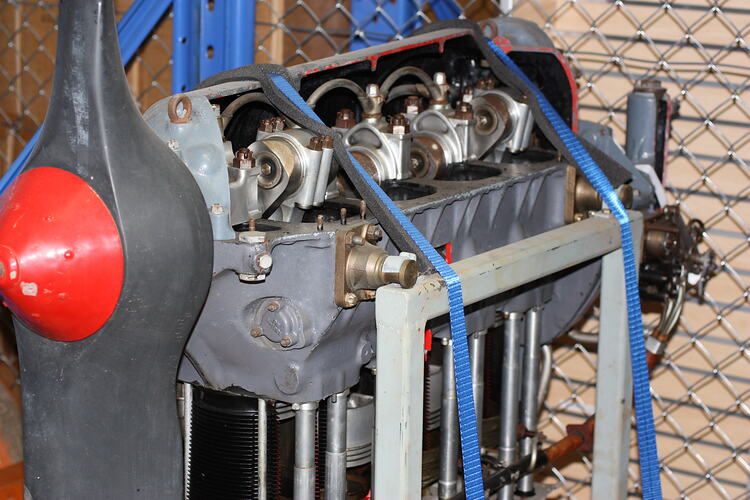The Gipsy Major was designed and built by the De Havilland Aircraft Co. as a development of the AIRDISCO Cirrus four-cylinder, air-cooled aero engine. The Cirrus utilised First World War surplus engine components such as cylinders and pistons from RAF 1A and Renault V8 engines. De Havilland produced the Gipsy I, II & III engine which was fitted to the DH 60 Gypsy Moth biplane from 1927. De Havilland's Frank Halford redesigned this engine as the Gipsy Major which inverted the design with the four cylinders facing downwards to provide the clean single-piece upper cowling used on the DH 82 Tiger Moth which appeared in 1932. This inverted design was also adopted for the Gipsy Six engines used on such aircraft as the three DH 88 Comet aircraft which competed in the 1934 England to Australia Centenary Air Race.
Australian production of the 130 horsepower Gipsy Major Series I engine was planned in 1939 following the start of the Second World War and the rapid expansion of pilot training required for the Empire Air Training Scheme. De Havilland Australia was producing the DH 82A Tiger Moth trainer in Sydney and supply of engines from overseas could not be guaranteed. General-Motors-Holden's Ltd were the lead contractor for the Gipsy Major program but problems emerged when the drawings supplied were found to lack details required for production and even worse, were apparently intended for French use as the measurements were in metric units which required the conversion of thousands of dimensions to imperial units then in use.
De Havillands sent two engineers and two engines to Australia to assist with the project. About 85 different sub-contractors made parts for the Gipsy Major and each received drawings and the appropriate component from one of the two imported engines which had been dismantled for this purpose. Twenty sets of parts were built for testing of these sets, two were selected as the proof samples, one full set was kept by GM-H and the other approved component was returned to the sub-contractor as a proof sample for that part. GM-H assembled and tested completed engines at Fishermans Bend, Melbourne. This was the first engine of any type made by GM-H. The first locally built engine (serial no. T.1) was tested by the CSIR Division of Aeronautics in May 1941. About 1300 Gipsy Major engines were built in Australia as one of the more extensive wartime production projects. GM-H was proud of the project and the completion of the 1000th engine in 1944, attended by the Minister for Aircraft Production Senator Cameron, was cause for a ceremony and celebration at Fishermans Bend.
More Information
-
Keywords
-
Localities
-
Authors
-
Article types

